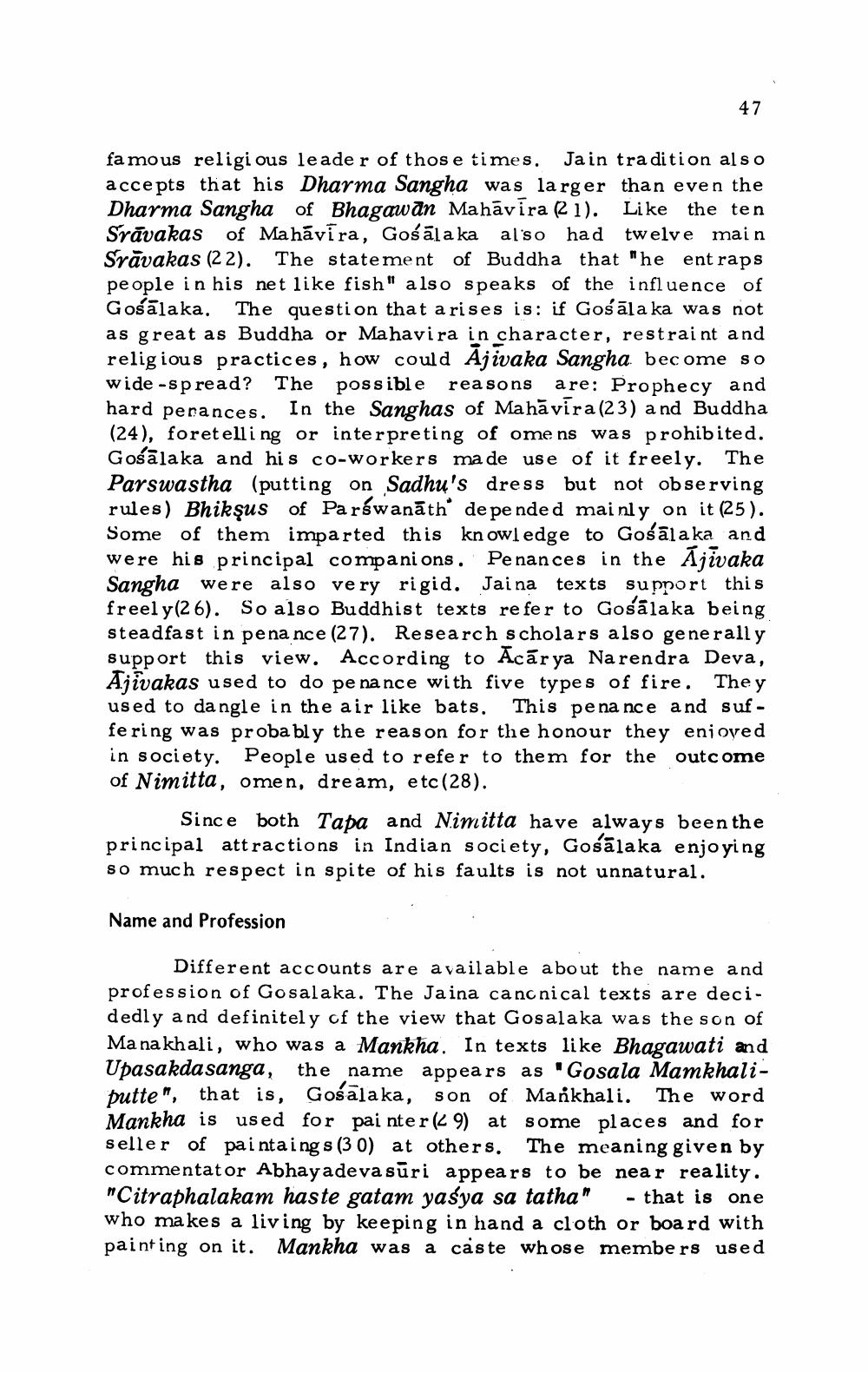________________
famous religious leader of those times. Jain tradition also accepts that his Dharma Sangha was larger than even the Dharma Sangha of Bhagawan Mahavira (
21). Like the ten Srāvakas of Mahavira, Gośāla ka also had twelve main Srāvakas (22). The statement of Buddha that "he ent raps people in his net like fish" also speaks of the influence of Gosālaka. The question that arises is: if Gośāla ka was not as great as Buddha or Mahavira in character, restraint and religious practices, how could Ajivaka Sangha become so wide-spread? The possible reasons are: Prophecy and hard perances. In the Sanghas of Mahāvira (23) a nd Buddha (24), foret elli ng or interpreting of omens was prohibited. Gosālaka and his co-workers made use of it freely. The Parswastha (putting on Sadhu's dress but not observing rules) Bhiksus of Parswanāth® de pe nded mainly on it (25). Some of them imparted this knowledge to Gośālaka and were his principal companions. Penances in th Sangha were also very rigid. Jaina texts support this freel y(26). So also Buddhist texts refer to Gosālaka being steadfast in penance (27). Research scholars also generally support this view. According to Acārya Narendra Deva, Ajivakas used to do pe nance with five types of fire. They used to dangle in the air like bats. This penance and suffering was proba bly the reason for the honour they enjoyed in society. People used to refer to them for the outcome of Nimitta, omen, dream, etc (28).
aka
Since both Tapa and Nimitta have always been the principal attractions in Indian society, Gosālaka enjoying so much respect in spite of his faults is not unnatural.
Name and Profession
Different accounts are available about the name and profession of Gosalaka. The Jaina cancnical texts are decidedly and definitely of the view that Gosalaka was the son of Ma na khali, who was a Mankha. In texts like Bhagawati and Upasakda sanga, the name appears as 'Gosala Mamkhalibutte", that is, Gosalaka, son of Mankhali. The word Mankha is used for pai nter(
29) at some places and for seller of paintaing s (30) at others. The meaning given by commentator Abhayadeva sūri appears to be near reality. "Citraphalakam haste gatam yasya sa tatha" - that is one who makes a living by keeping in hand a cloth or board with painting on it. Mankha was a caste whose members used




